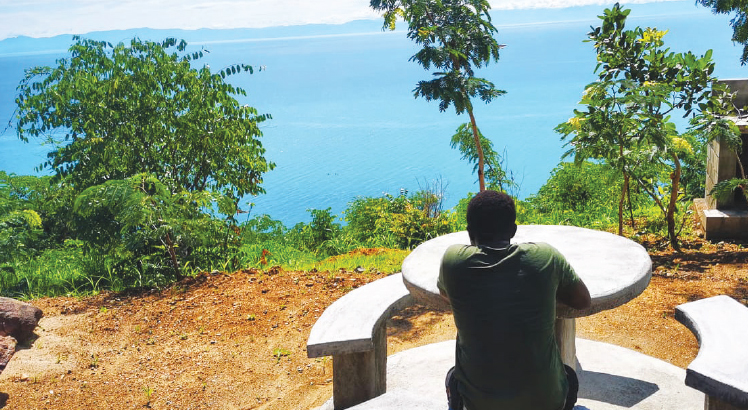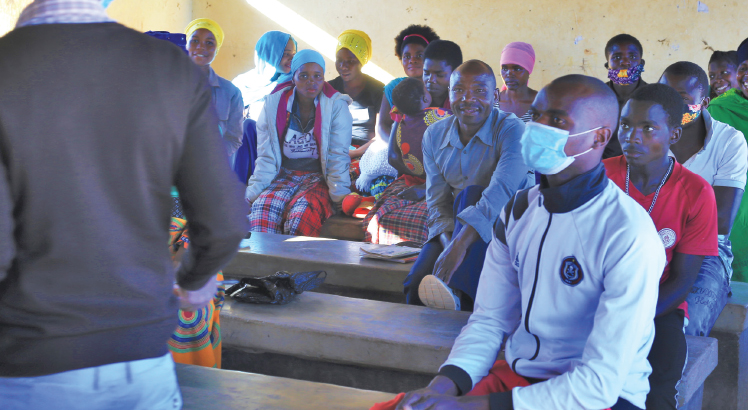Last week, our Staff Writer Kondwani Kamiyala looked at how the Providence Industrial Mission (PIM) in Chiradzulu is a rich heritage tourism site, being the backyard of Reverend John Chilembwe, arguably Malawi’s first independence fighter. This week, he looks at the Tcharo-Livingstonia Trail, which runs from Nkhata Bay to Rumphi in the North. Not only is it a historic and heritage tour, but also one that gives picturesque views of Lake Malawi from vantage points….
The Titanic is one of the world’s worst shipwrecks in history. In Malawi history, the worst accident on Lake Malawi is recorded as the sinking of the MV Viphya on July 30 1946, when this country was called Nyasaland.
The ship sank at Chitimba (then Fort Florence) after it set sail from Mangochi (Fort Johnson), with 146 of the 192 passengers and crew aboard perishing. The shipwreck has not been found since.
The landmark Queen Victoria clock-tower in Mangochi is dedicated to the 146. A lifebuoy used by survivors on the ship is in the Karonga Museum.
Mughogho enjoys a breath at one of the campsites overlooking the lake
In Malawian literature in English, Steve Chimombo remains the authority on the Napolo myth, focusing mostly on water accidents and disasters. In The Viphya Poem and The Wrath of Napolo novel, Chimombo tells the story of the ship that was built in Scotland, before it was shipped in parts to Malawi through Beira in Mozambique and reassembled at Monkey Bay. The ship made three trips on the lake, before it met its fateful end on the fourth trip that Tuesday.
Today, Chitimba is one of the spots in an excursion that adventurers go in the Tcharo-Livingstonia Trail. The GIZ’s More Income and Employment in Rural Areas (Miera) supported the construction of four community-run campsites along the trail. These are at Nkhope (in Old Salawe), Nkhombwa (Mlowe), Chombe and Thekero (Chitimba), all in Rumphi.
The trail includes hikes, breath-taking views, walks through natural forests and also swimming and boat rides. Not forgetting telling of stories, like those who witnessed and helped survivors of the sinking Viphya, according to chair for the Thekero village development committee (VDC) Cephas Mkandawire who leads the community in caring for the Chitimba site.
“We are happy that the trail has a new face. Chitimba is serene and quiet, with beautiful waters. From here, you can see the Chombe Mountain peak. From that peak, you have a great view of the lake where you can see Livingstonia and parts of Tanzania.
“Apart from the great views, we have people who were there when the MV Viphya sank in 1946. We have graves for some of those that died. The story of the Viphya is told from one generation to the other. From Chitimba, those willing can make it to the Livingstonia Mission, which is an important place in the history of the country,” says Mkandawire.
T/A Mwamlowe, in whose area lies the Nkhombwa site in the trail was excited with the project conducted to support locals who were hit hard with the Covid-19 pandemic as the number of tourists dwindled tremendously.
“Members of the community benefited as they were paid for their involvement in the construction works at a time tourists were not coming. They are going to benefit as tour guides and telling our stories. Being in a trail that leads to where the Viphya sank, I feel this is a tourism attraction of national and historical importance,” said the chief.
From January 15 this year, Evess Kawonga joined members of the Chipokababoli Hiking Club and went on the five-day trail. Exciting photos of the picturesque views abound on her Facebook page.
She calls the hike up Chombe Mountain gave a beautiful feel, comparing it to South Africa’s Table Mountain. It took about three and a half hours from the foot in group village head Mwachiweta’s area to the peak, pegged at 1 334 metres above sea level.
“The experience was just amazing,” she writes on her Facebook wall, “I just loved the beautiful nature. I took pictures of the beautiful plants. The beauty of nature here is another level.”
She says she was amazed by one big ragged rock, with a space underneath. This is the Nyumba ya Agogo—granny’s abode.
“We were told that once upon a time in this cave lived an old, homeless person and had no one in their care. That is, until a certain organisation built the Gogo a house,” she says.
Currently, the community-run trail post updates on activities on its Facebook page, Tcharo-Livingstonia Tail.
According to Miera, Elizabeth Bailie, Miera component leader for tourism, trade and manufacturing, the Livingstonia campsites were one of the 15 sites they worked on in the past two years across the country to help those affected by the 80 percent decrease in international tourism due to Covid-19.
“The campsites [in the trail] provide the new opportunity for multi-day hikes in this region with camping facilities. In line with Malawi’s marketing theme of ‘Nature-based tourism’, the Northern lakeshore is home to beautiful scenery and fantastic opportunities for hiking and outdoor activities for domestic, regional and international tourists,” said Bailie.
Colby Mughogho, who led the team from Aventures with Colby (AwC) in the project, said he was excited that it was complete and that it would provide an alternative tourism destination in the Northern Region to add to Nyika Plateau, Likoma Island and the Nkhata Bay beaches.
As one way of helping market the trail, AwC has organised a four-day trek that will run from May 12 to May 16, with visitors expected at starting points in Blantyre, Lilongwe and Mzuzu. The fee includes transport, camping gear, food and activities like interaction with communities to hear the history of the trail, the history of the tremor that killed people at Tcharo Village, history of the MV Viphya, a boat ride, hike, swimming and traditional dances.
“It is great that we have built campsites for those who love the wild and outdoors, campfire pits, picnic benches and where people can pitch-up their tents.
“We are happy that communities and the GIZ have a memorandum of understanding on how the trail will be maintained and marketed,” says Mughogho.
According to him, apart from benefiting as tour guides, the locals will also profit by selling souvenirs and artefacts to visitors as well as fish, vegetables and other foodstuff to campers.
The post More to lake Malawi than water, sands appeared first on The Nation Online.
 Moni Malawi
Moni Malawi 

